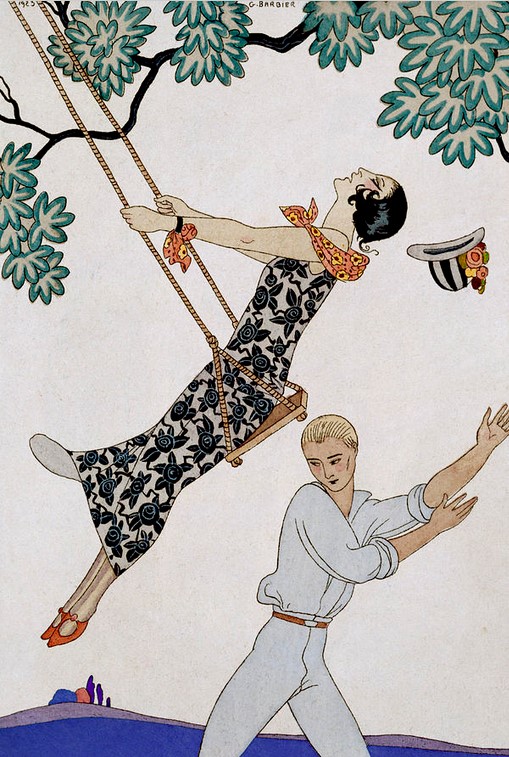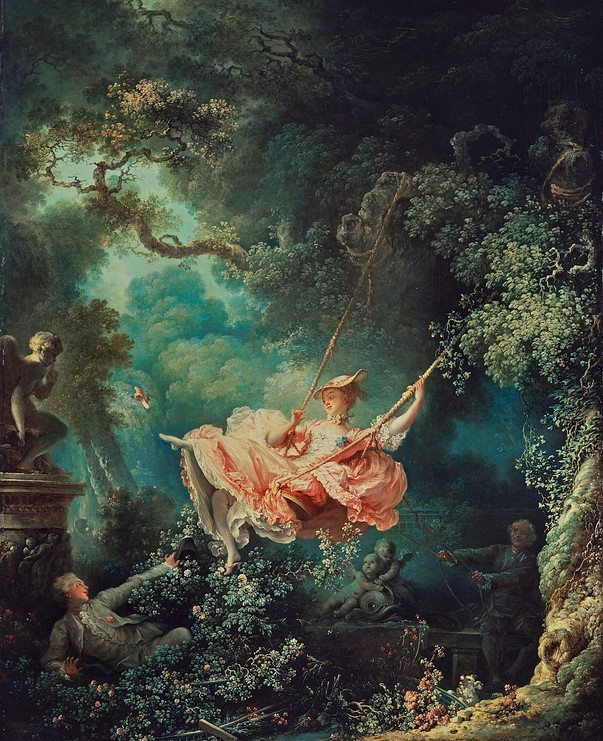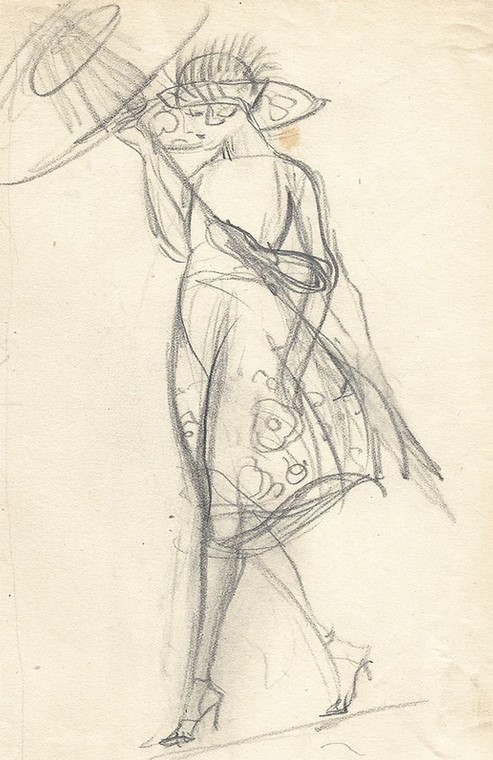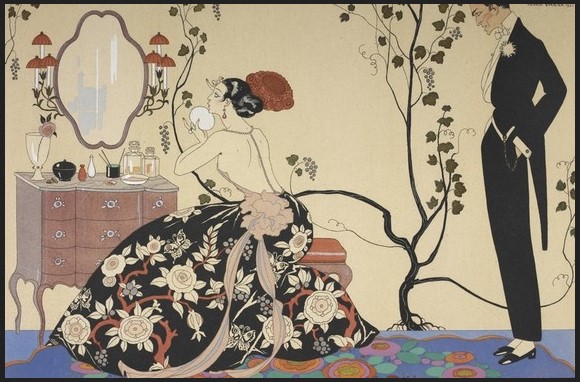Sometimes, I wonder why we bother trying to create any new art at all, when it’s not only been done, but been done better. In my wanderings along the Intertubes, I happened upon this little Art Deco piece:

It’s called The Swing, and was painted in the 1920s by Georges Barbier.
Alert Readers may recall that there’s been another artwork on the same topic (and title) featured on these pages, to wit, the one painted by Jean-Honoré Fragonard back in 1767:

Sorry, but I prefer the rococo playfulness of the later over the spartan coldness of the former — and I love Art Deco, generally speaking. (For those interested, I talked about the Fragonard piece here — note the post date.)
That’s not to say that Barbier is a bad artist, of course. Note La Jambe (“The Leg”), for instance:

I’m not generally into sketches, but I’d have that one on my wall in a heartbeat. And his Le Grand Décolletage (“The Backless Dress”) is absolutely brilliant (and the man’s expression is priceless):

See what I mean about Now And Then? That “fashion” is very popular nowadays with celebrities; but they did it back then too, and better withal.

I avoid most discussions dealing with art because they always go the same way and I realize the idea of art now is mostly a free for all. I’m basically a traditionalist, prefer “real” subject matter, and believe the quality of the work is dependent upon the education, experience, and most of all, effort of the artist. Seems that most of what is considered art for the past 50 years or more requires very little effort and almost no talent.
If you haven’t already read it, may I recommend Tom Wolfe’s THE PAINTED WORD? An excellent evisceration of Modern Art.
This can’t wait! https://www.shockya.com/news/2020/11/13/us-army-seized-dominion-voting-systems-servers-in-germany/
The thing about Fragonard’s work is that he tells you something is up because of the cherub, which can double as Cupid. He’s inviting you to look further. He knew that thecontext and symbolism would not be immediately apparent to later generations, so he provides a clue.
Something I remember being told but haven’t actually found elsewhere is that the woman can also be viewed as France, swinging from the old to the new. It predates the French Revolution by over 20 years so is not revolutionary in that sense.
One thing that has puzzled me for years about the Art Deco period is the variety of erotic or at least suggestive images of women with Borzois. Not nude, but in diaphanous dresses, with the dogs often fawning on them.
You see prints, and figurines. Don’t know about paintings. Maybe it’s all one artist, but I don’t think so.
I like the art shown above. I like art that shows something I can recognize. The modern splotches, lines and splashes of paint or anything that raises the question “WTF is that?” isn’t art. Often times that splotches and splashes look not much different than a kindergartener’s finger paints.
What galls me is that public building projects require a percentage of the budget to be spent on some sort of artwork. The architecture is excluded from the art budget. So instead of very nice classic looking public buildings, we have these sterile cold looking buildings with one or more large pieces of crap in front of it or in it. An addition to a public building around here has some sort of clock in it. But no one can tell time with it because no one can figure out what the hands are on the alleged clock. The state paid $40k or more for a piece of crap.
JQ
In my youth the city of Cleveland erected a new government building of the usual characterless glass box style, and paid an exorbitant amount of money for a ‘sculpture’ that looked for all the world like a large metal pipe, bent at several places, and called “Portal”, which was placed before the entrance.
My mother took one look at the building and the sculpture and said, “Well, I know why it’s called Portal; it’s the only way to tell where the front door is.”